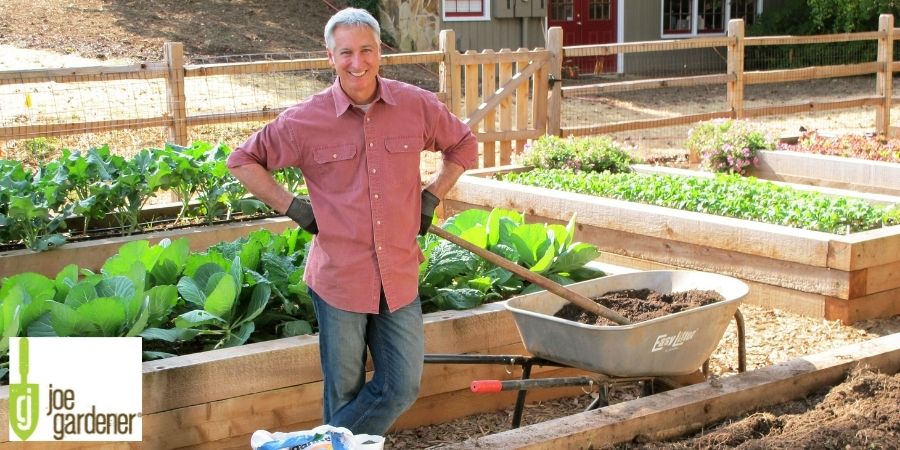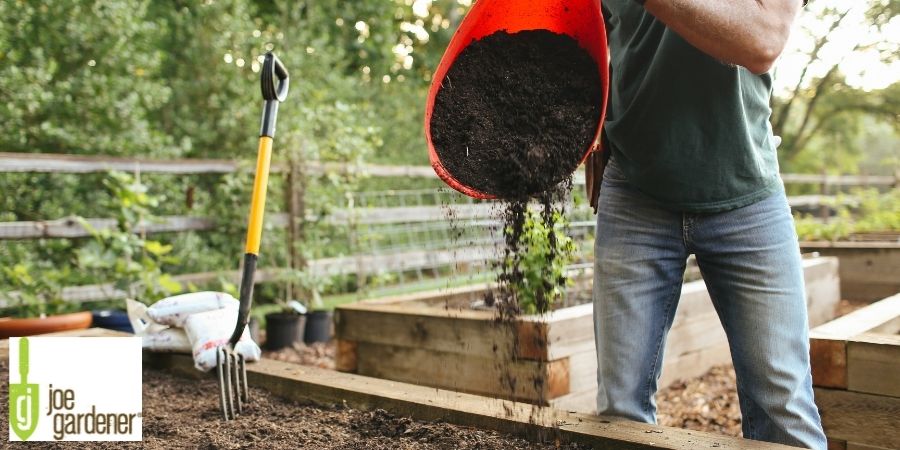Feed the Soil, Let the Soil Feed the Plants
- Gardening Expert and Host of Growing a Greener World®May 29, 2021
The Heart of Organic Gardening
Successful organic gardening and landscaping starts with the soil: If the soil is fertile and healthy, plants will grow more vigorously and suffer from fewer diseases.
We often think about fertilizing as feeding plants, but in organic gardening we feed the soil — and let the soil feed the plants. Good soil is teeming with life, namely bacteria and fungi that turn minerals and organic matter into plant-available nutrients while also fighting plant pathogens. Regularly amending soil with organic matter ensures that these beneficial microbes in the soil food web can continue to deliver nutrients to plant roots.
“Feed the soil, and the soil will feed the plants” is one of the underlying principles of organic gardening. It is based on an understanding that if we work in concert with natural systems, rather than trying to outsmart or compete with them, our efforts will be more fruitful.
I like to think about soil like a bank account. If you only make withdrawals and never make any deposits, soon the bank will be empty. As plants grow, they are withdrawing nutrients from the soil. Deposits of organically derived fertilizer, like Milorganite, and organic materials, such as compost and natural mulch, keep the nutrient bank full of macronutrients like nitrogen, phosphorus and potassium and numerous micronutrients.
The ideal soil is about 50% minerals, 45% water and air, and 5% organic matter. That 5% doesn’t sound like much, but it is essential to keeping a garden productive. If it becomes depleted, soil quality will decline rapidly. Conversely, periodic soil amendments with organic matter will have a cumulative positive effect. The soil will keep getting better and better in terms of fertility, texture, and proper drainage, and plants will be happier for it.
In soil that lacks sufficient organic matter and a robust soil food web, necessary nutrients may be present but unavailable to plants. Feeding the soil will encourage microbes to proliferate so plants can take advantage of those lock-up nutrients that have been so close but still out of reach to them. 
Through root exudates — sugars, acids, and other organic compounds — plants influence microbes in the soil. The plants tell the microbes what nutrients they need, and the microbes bring them to the plant. For their work, the microbes are rewarded with carbohydrates. This mutually beneficial relationship is why feeding the soil leads to thriving plants.
Unlike synthetic fertilizer, which is water-soluble and runs off or leaches away quickly, organically derived fertilizer is non-soluble, releasing nutrients slowly and effectively over time as soil microbes break it down. Slow and consistent is exactly how plants, from vegetables to turf grasses, prefer to receive nutrients to enable their growth. As an added bonus, beneficial microbes fight many soil-borne pathogens that stunt or kill plants.
Synthetic fertilizer can easily burn plants that have taken up too many nutrients too fast, causing browning and damage to both the roots and foliage tips. Because organic fertilizer is slow-release, it is much more forgiving and will not burn plants when applied properly.
Synthetics also often lack the secondary nutrients and micronutrients that organic fertilizers provide. There are various nutrients that, while rarely discussed, are required in trace amounts for healthy plant growth, such as iron, calcium, sulfur, and magnesium.
When feeding lawn soil, the best time to start is in spring. As the days get longer and temperatures grow warmer, soil microbes become active again after the cold winter. In Northern climates, a week before Memorial Day is a good target date. In the South, this can be as early as the beginning of April. Make the last application of the year in fall, when lawns begin to go dormant.

In a vegetable garden, feed the soil just before sowing seeds or placing transplants. The microbes will begin to get to work breaking down the organic fertilizer, making the nutrients available to plants just as their growth is taking off. Depending on the needs of the specific type of plant, an additional feeding can follow mid-season or with more frequency, though sparingly.
Much of the organic matter added to soil this year will pay off in years to come. It takes patience, but the results (thicker lawns and productive gardens) are worth it.

